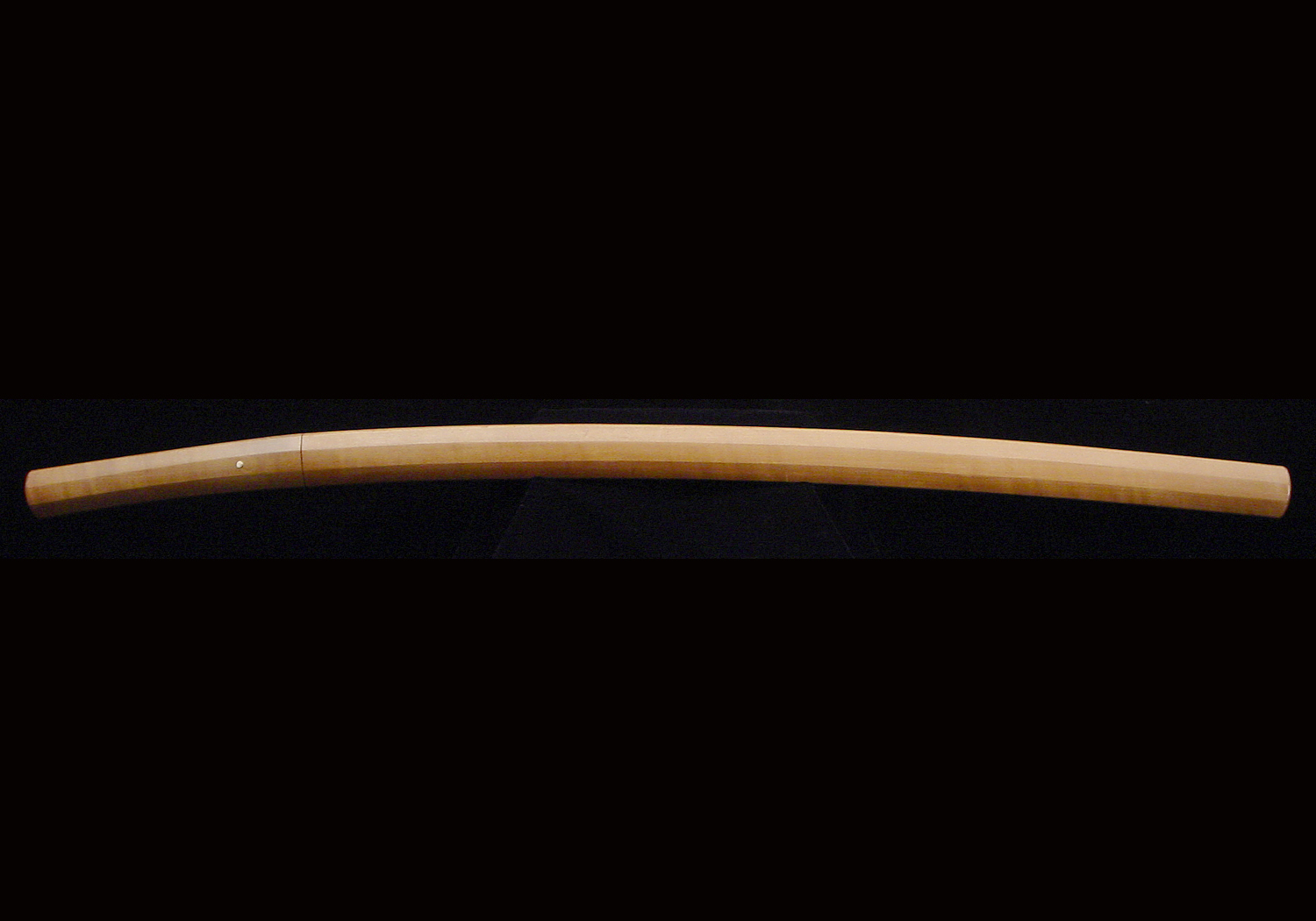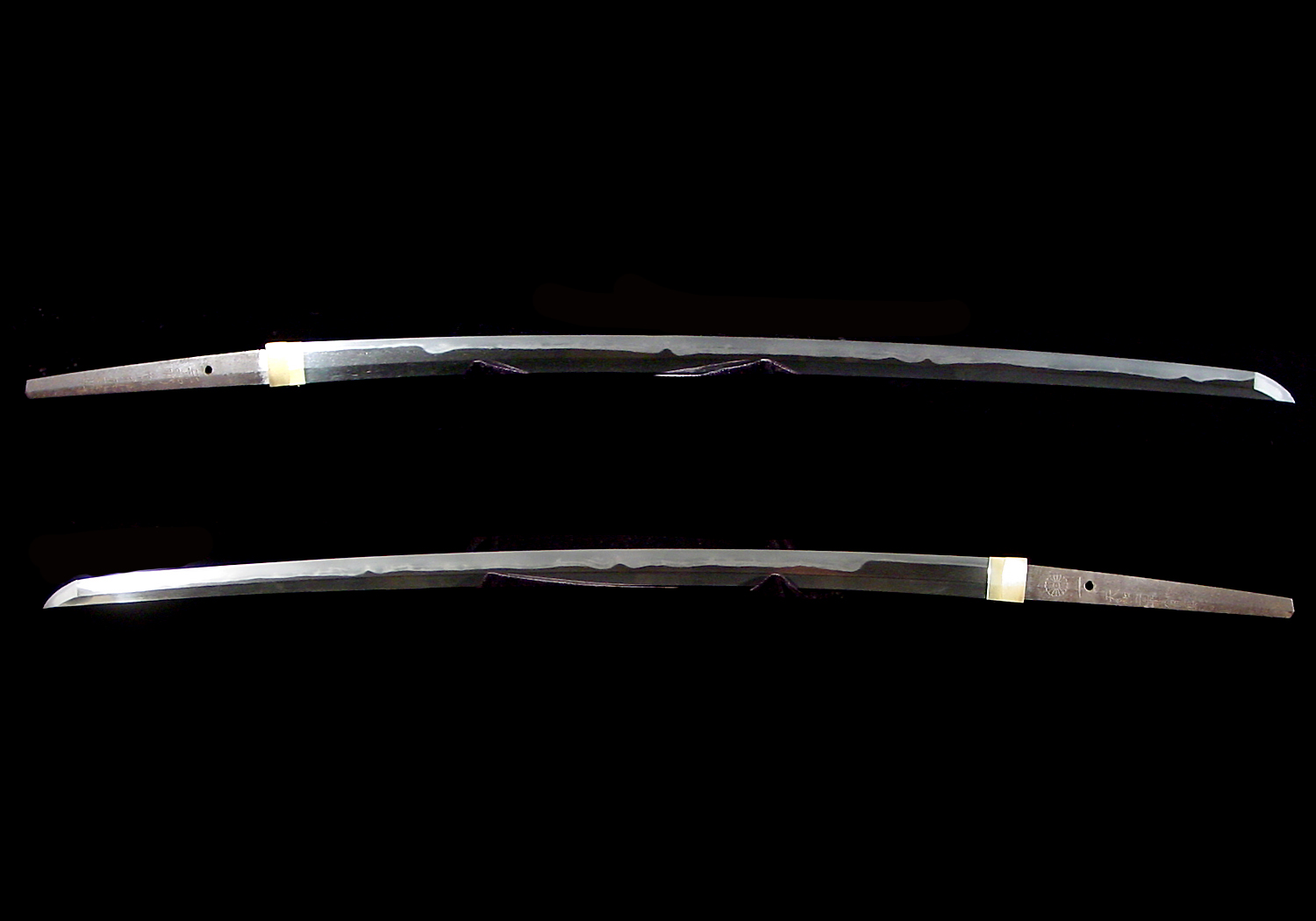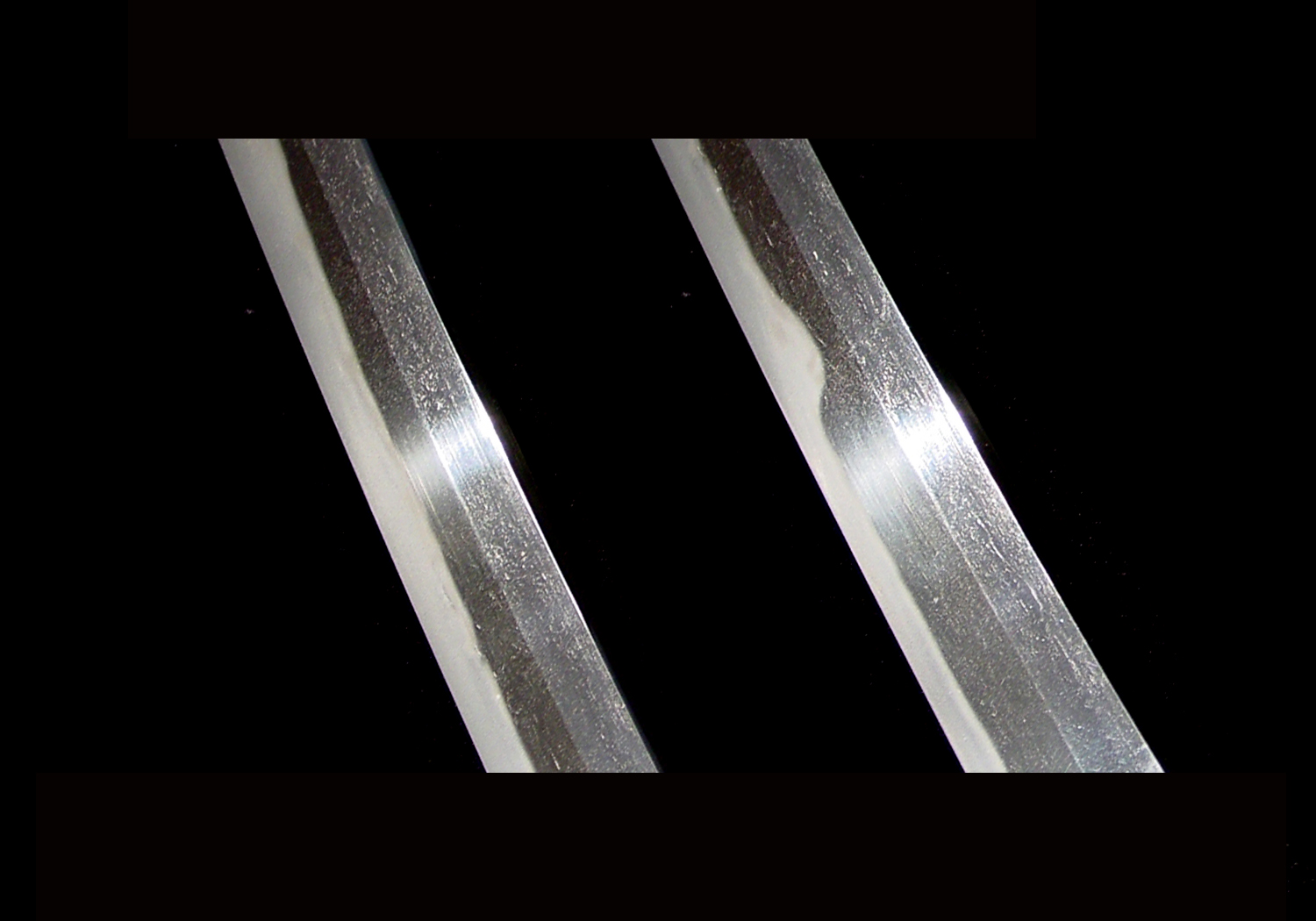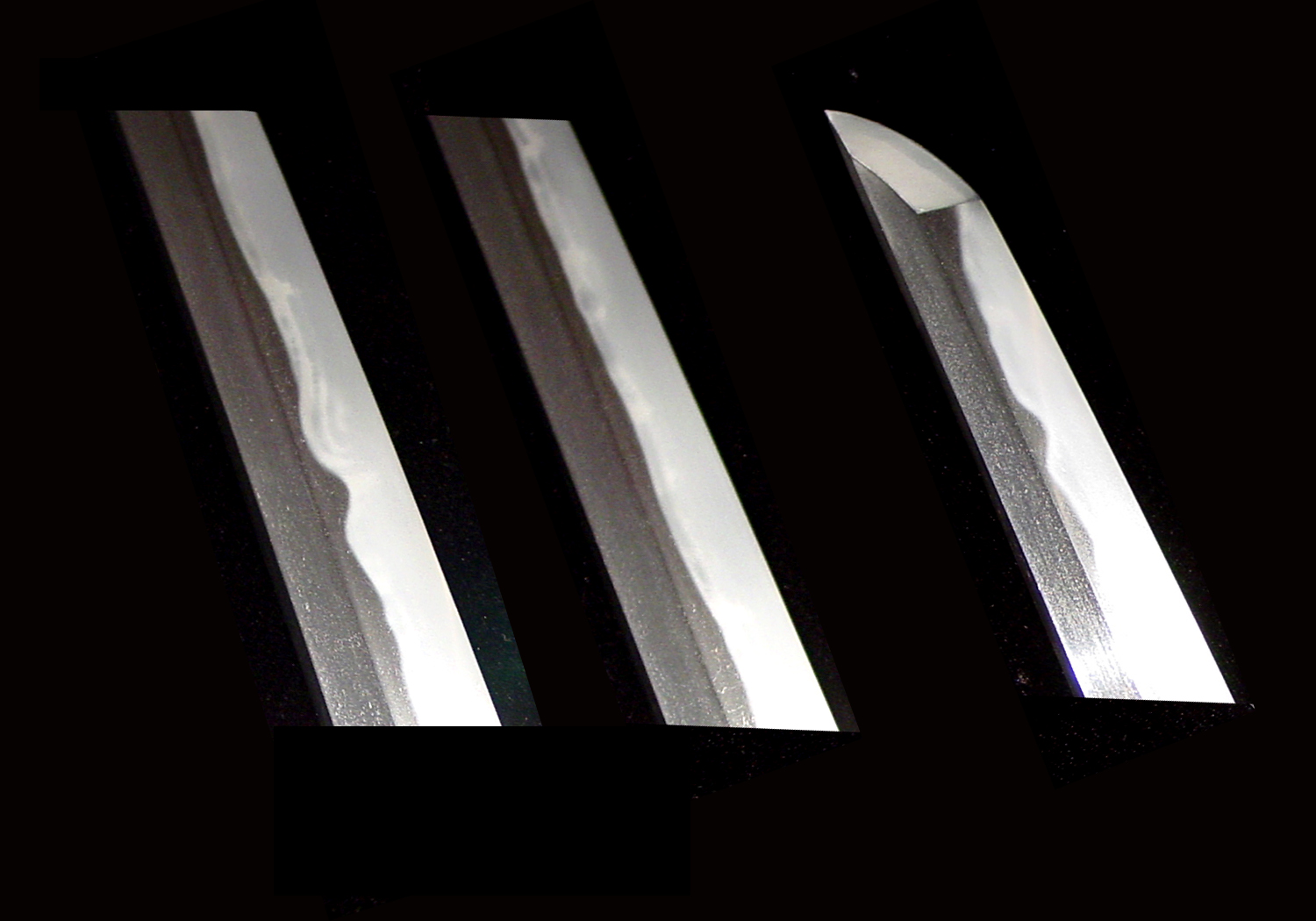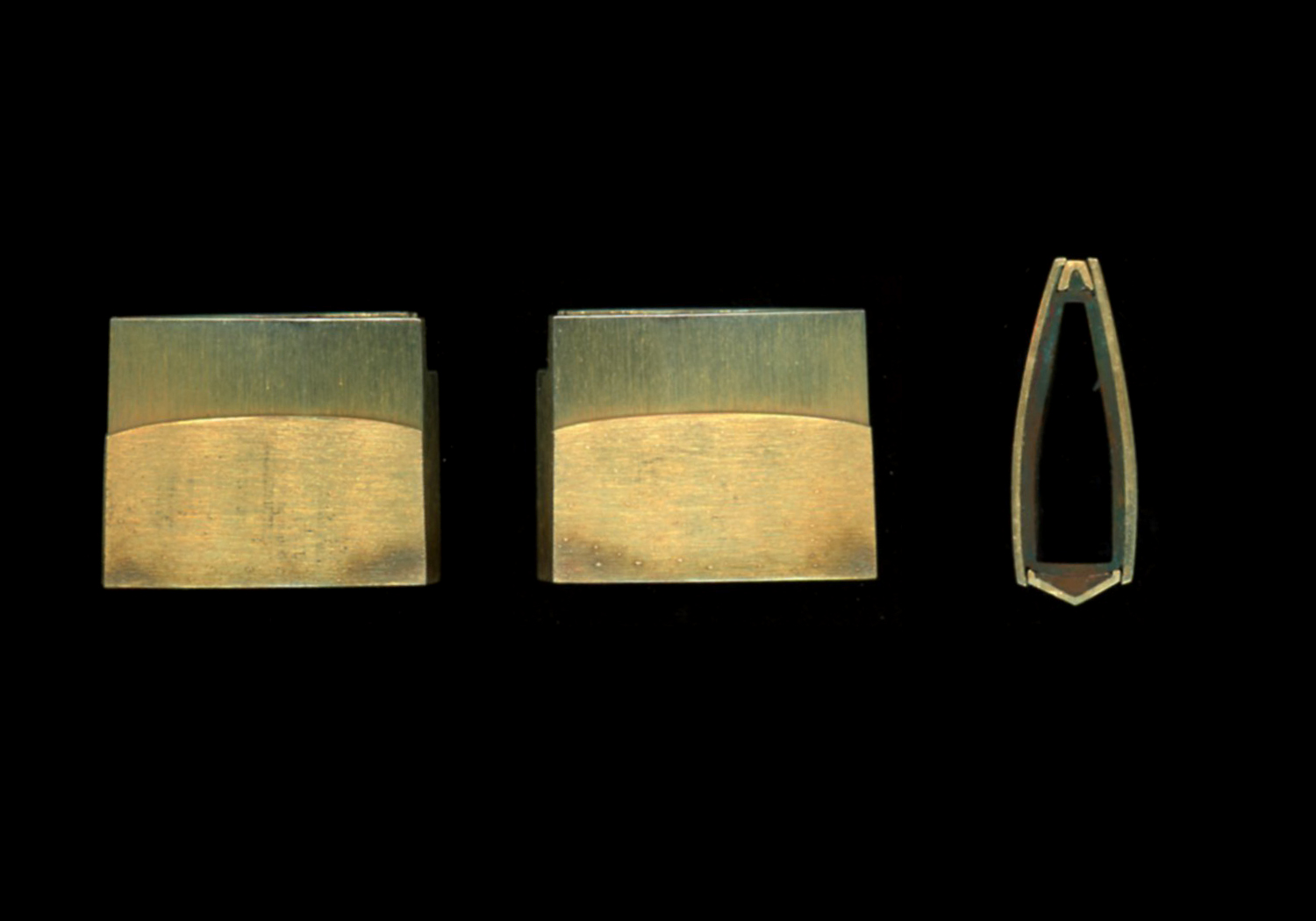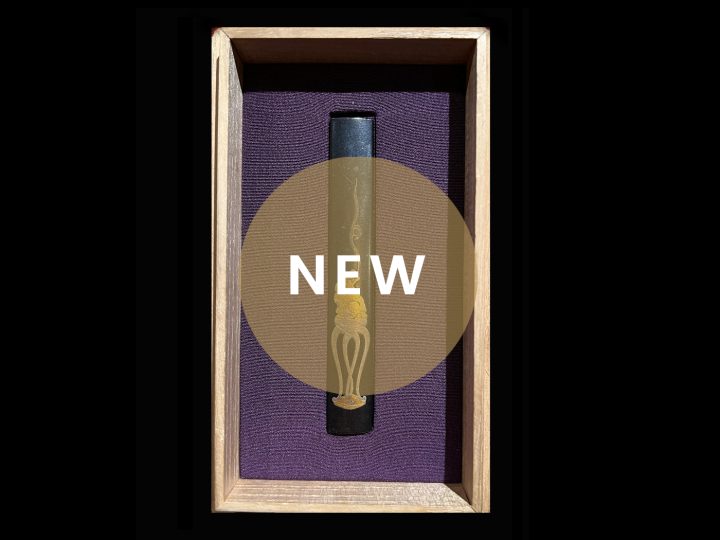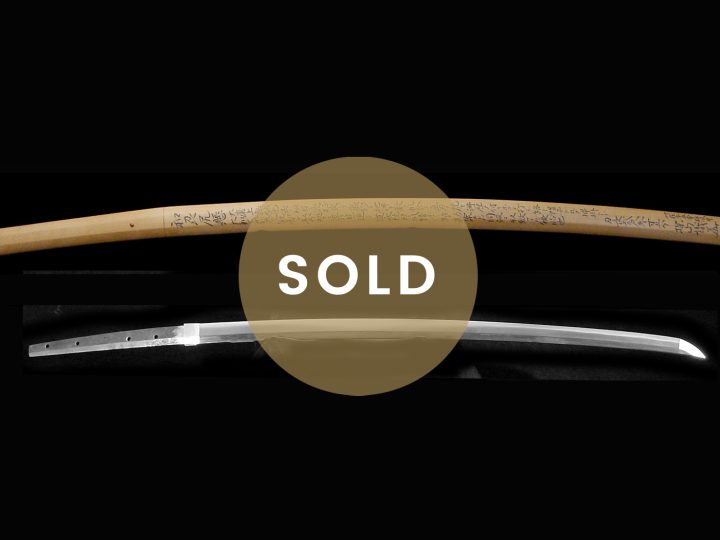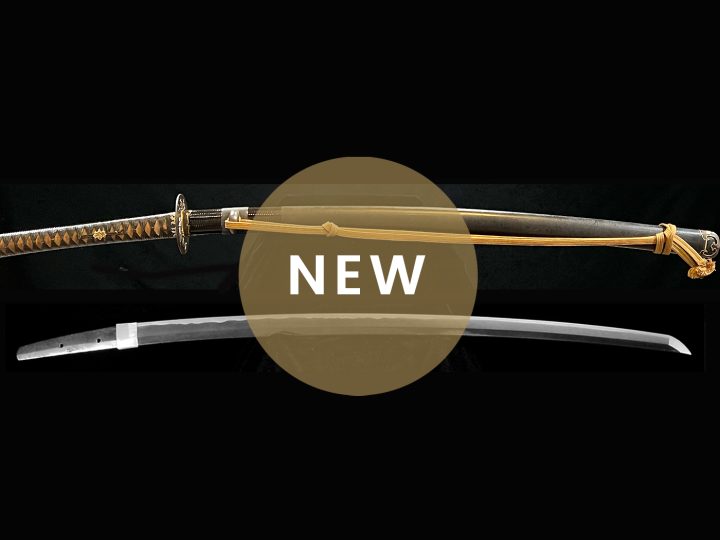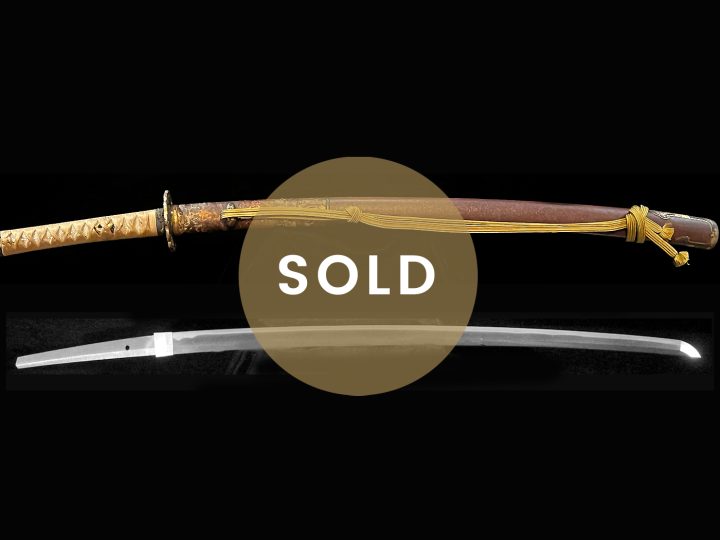
Tango no Kami Naomichi (丹後守直道) was a smith from the Mishina school who worked in Osaka in the late 1600’s and into the 1700’s. He studied under the famous smith, Tango no Kami Kanemichi. He was first called Jôuemon Naotsugu. His teacher, Kanemichi, was the second son of the nidai Kyoto Yoshimichi. He was a jôsaku rated smith and also his swords were rated as being Ryôwazamono (extreme sharpness). When Kanemichi died in the twelfth year of Kanbun (1672), his school was taken over by the smith of the sword we present here, Naomichi.
It was at this time that Naotsugu changed his name to Naomichi which was the original name used by his teacher Kanemichi. Thus, he became the second generation smith to use the name Naomichi. This katana is absolutely beautiful and a wonderful example of his work. It is signed on the omote (front) Mishina Tango no Kami Naomichi (三品丹後守直道). The ura side of the tang (reverse) has the symbols, Kiku Ichi, (菊一), which is something that his teacher, Kanemichi, used to occasionally put on his swords. Additionally, what is really special is that it also has the date that it was made, Tenwa ninen hachigatsu hi (天和二年8月日). This means, “made on a day in August of the second year of Tenwa” or August of 1682. It is unusual for blades of this time period to have a date. This is important reference material for this smith.
It has a cutting edge of 27.625 inches or 70.2 cm. The moto-haba (width at the base) is 1.25 inches or 3.2 cm and the saki-haba (width at the point) is 0.78 inches or 1.97 cm. The kasane (thickness) of the blade is 0.26 inches or 0.67 cm. It has a very graceful tori sori (curvature) measuring 0.54 inches or 1.38 cm. The tang is ubu (original and not altered) with one mekugi-ana.
The jitetsu is a very fine ko-itame hada with masame hada in the shinogi-ji. There are clouds of ji-nie floating just above the hamon in several places. The hamon starts with a typical Kyo–yakidashi relatively straight with a very slight notare that quickly develops into a beautiful and robust sudare-ba for which Naomichi’s teaching lineage of Kanemichi and Yoshimichi are famous. The habuchi is absolutely covered in ji-nie. Within the hamon are areas of sunagashi and nijuba. All in all, it is spectacular. The bôshi can best be described as a Mishina bôshi in that there is a very slight rise midpoint toward the munesaki. It has a ko-maru turn-back and a short kaeri.
This sword is in excellent polish and comes with Tokubetsu Hozon papers from the NBTHK attesting to the validity of the signature and the quality and condition of the sword. The sword comes in a good quality shirasaya and has an excellent two piece gold foil covered habaki.
SOLD


